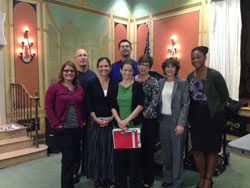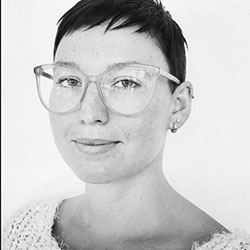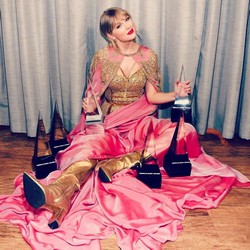“The Conjuring” really captured my attention back in 2013, standing out among other horror movies for its relative lack of jump scares, the way it did not rely on tropes to move the plot along, and how women were still shown as being strong characters. Though it did rely on some clichés, it set a high bar for what such movies could attempt, so I eagerly sat down to watch “Annabelle” on Friday, Oct. 3.
This anticipated follow-up fell short in nearly every single category, with its issues ranging from claustrophobia-inducing camera angles and an exhaustingly overused plot to utilizing tropes at almost every possibility. Where its predecessor at least attempted originality, the 2014 ‘prequel’ bored me, only drawing my attention in the last few minutes (not counting its numerous painful jump scares).
“Annabelle,” directed by John Leonetti and written by Gary Dauberman, is about a young, recently-married couple, consisting of the pregnant Mia (Annabelle Wallis) and John (Ward Horton). The movie opens with them at church talking to Sharon Higgins (Kerry O’Malley) and Pete Higgins (Brian Howe), who live next door. After, John notes that they “shouldn’t talk about the pregnancy” around them, as their daughter Annabelle ran away two years earlier. Coincidentally, Annabelle returns to the Higgins household with an unnamed male, murders her parents, then the two break into John and Mia’s house and attempt to kill them as well. This ends with Annabelle committing suicide while holding the ‘Annabelle’ doll and bleeding on it, with the movie implying that her blood somehow let a demon begin using the doll as a conduit to attack Mia and John.
Throughout the film, the writers bash the viewers over the head with Satanism, Occultism, and related horror-movie clichés, ranging from Mia watching a documentary on Charles Manson in one of the opening scenes to a book called “The Devil’s Welcome” prominently displayed in a bookstore window (which seems unlikely for Pasadena in the 1960s, when everyone was terrified of Satan worshippers). Nearly every scene seems obliged to mention demons, the mysterious ‘A’ shaped mark that appears throughout the events, or cult worshippers. The only times these aren’t mentioned are when Mia is being attacked by said demon, so no one had to mention that it was there.
Aside from the worn-out plot of “devil worshipper kills self, summons evil upon those who possess random creepy doll,” the writing uses nearly every character cliché. Mia continuously wanders toward certain danger and gets herself hurt on numerous occasions due to a lack of common sense. John “has” to go to a conference to make sure he gets a specific job, leaving Mia alone right as creepy things begin to happen (even though he misses the conference, he gets the job anyway). Later, as Mia tries to convince John that they’re being haunted, he belittles her, saying “It’s all in your head” and indicating it’s just post-partum stress. These are just a few examples of the sexist tropes that wormed their way into this film.
Don’t think it was just about women, though—a detective indicates that all cultists are “crazy” and “crazy people do crazy things” when explaining why Annabelle would attack her parents, taking a dig at the mentally ill as well, perpetuating an already widespread and dangerous stereotype.
It got to the point where I wanted everyone to just stop talking. I was welcoming the jump scares, and I absolutely hate jump scares. At least the demon leaping at Mia from the ceiling didn’t have to say anything.
Was it a good movie? I’m not sure. It felt like a money-making scheme built off the same trends we see in almost every horror movie, exploiting how popular “The Conjuring” was.
To be fair, this was clearly a high budget film, as seen in the set design. It really did feel like a step back in time, especially when John fiddles with the TV antenna to let Mia watch a black-and-white soap opera. The acting was well-done, and the cast had some stars to lend it some weight. Plus there were some genuinely creepy moments, especially the ending (which I liked), and those of you who saw “The Conjuring” will see some distinct nods to the parent film.
One possibility for the distinct change in writing—aside from how this had completely different writers—is that “The Conjuring” was based on a true story while “Annabelle” was completely fictional. The ‘real’ story is the one seen in the opening of “The Conjuring”: A nursing student received the doll from her mother, but soon found it was changing positions. A turned head or moved arm became complete room-to-room transfer. While a medium said this was the spirit of a girl named Annabelle having possessed the doll, it soon began causing the girls bodily harm, at which point they called a priest, who then called the demonologists Ed and Lorraine Warren (who did not appear in “Annabelle”). An exorcism was performed and the doll was locked in a glass cabinet in the Warren household.
This movie left a lot of questions, and my criticism may seem harsh, but it is 2014, and to see films promoting the same offensive notions that we’ve been fighting for years was disheartening. While it may, in some respects, have been an accurate portrayal of the time period, there was still so such a lack of original characters and dialogue that if you really, really want to see “Annabelle,” do yourself a favor and wait for DVD.



